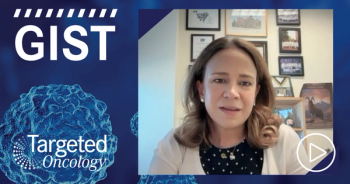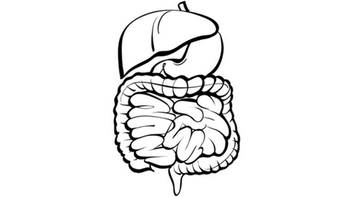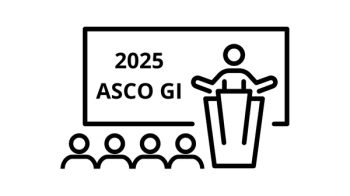
Molecular Testing in Gastrointestinal Stromal Tumors
Neeta Somaiah, MD: When a patient presents to you with newly diagnosed GIST [gastrointestinal stromal tumor], there are certain things that are important to do in their work-up, and also in the approach to management. Patients with localized GIST sometimes present to surgeons initially, but at our center we’re good with multidisciplinary care. Even with localized GIST, it is important to involve the medical oncologist because many times we are able to help with neoadjuvant treatment to shrink the size of the tumors and make surgery easier, more amenable, more likely to get an R0 [margin negative] resection, and might even spare the patients a total gastrectomy and allow them to have a partial gastrectomy with more preservation of function.
With locally advanced GIST, of course, the multidisciplinary care is very important because you do want to treat them up front and get the surgeons involved at the right time when you’ve had maximum response with your oral therapies. Even then for patients with metastatic GIST, I frequently involve our surgeons in discussions, and we present them at the right time because patients with a limited metastasis, or if they’ve had a good response to imatinib, you always want to re-present to see if you can make those patients NED [no evidence of disease] with surgery so that they can continue on imatinib, or the TKI [tyrosine kinase inhibitor] that they’re responding on, for a longer time.
Where does molecular testing fit in? In my opinion, and at our center, prior to initiating TKI therapy, it is important to get molecular testing done. It is well recognized that 5% of patients will harbor a PDGFR resistant mutation that doesn’t respond to the frontline approved therapy of imatinib. It’s the PDGFR D842V mutation, and we have an approved drug for the treatment of that subtype. Especially in patients with locally advanced or limited metastases, treating with an effective drug up front can make a dramatic difference in the course of their disease and their ultimate survival outcome.
I do get molecular testing up front on all patients. It’s important to recognize the majority of patients, 85% of patients, will have a mutation in KIT or PDGFR. You could do targeted testing only for KIT or PDGFR with specific exons that are common. In those who are negative for KIT or PDGFR, that’s from 10% to 15% of patients, like this one that we just presented, then I do a more expanded NGS [next-generation sequencing] testing panel that will look at mutations such as BRAF and NTRK fusions that we have seen sometimes. The majority of those patients will have SDH mutations that form the majority of the so called wild-type GIST.
It is important, in my opinion, to get these genetic tests done. When we look at the KIT and PDGFR mutations, there are also implications for the type of mutation that is detected, which is predictive for therapy or response to therapy.
In KIT, the majority of mutations, 60% to 70%, are seen in exon 11, and do tend to be highly responsive to imatinib. Then the next most common in KIT are exon 9 mutations, which tend to require a higher dose of imatinib for treatment. For PDGFR mutations, the smaller minority are exon 12 mutations, which are similar to the exon 11 mutations in the juxtamembrane, and they do respond to imatinib well. It is the exon 18 mutations that are the most more common in PDGFR, that tend to be resistant to imatinib and need an early evaluation and a look to see if a switch of therapy is required.
It’s also important to recognize that for frontline therapy we have only 1 approved drug, which is imatinib, and for PDGFR D842V mutations, avapritinib is approved in any line of therapy because that is still the most effective drug we have for that subtype. If you do end up detecting that mutation and if the patient’s already on imatinib and they’re not having a response, you can switch them, but if they haven’t started on imatinib, you can definitely start them on avapritinib in the front line.
As I told you, the majority of patients, 60% to 70%, will have a great response to imatinib. I tend to start them on imatinib because it takes sometimes a week to 2 weeks to get the mutation testing back. You go ahead and start them on imatinib, and once the mutation test comes back, if the result tells you that they are less likely to respond, and those would be the PDGFR D842V mutations, or even the wild type for KIT or PDGFR because sometimes they might not have as good of a response with imatinib. Those are the patients, even if they’ve started imatinib and they’re tolerating it well, I would do it early on—scan time point, maybe in 6 to 8 weeks—so that we can catch early progression and then switch to the next therapy that is appropriate.
Transcript edited for clarity.
Case:
A 68-Year-Old Man With Gastrointestinal Stromal Tumor
Initial presentation
- A 68-year-old man complains of a 4-month history of decreased appetite, vague abdominal discomfort and a sensation of fullness
- PMH: DM, medically controlled; colonoscopy at age 50 was unremarkable; no family history of cancer
- PE: abdominal pain on deep palpation; otherwise unremarkable
Clinical workup
- Labs: Hb 10.5 g/dL, plt 105 x 109/L; other lab values WNL
- Endoscopy: showeda submucosal ~6 cm mass with ulceration
- EUS: irregular borders on extraluminal surfaces with marginal halo and hyperechogenic spots
- FNA biopsy: mitotic activity showed >5 mitoses/50 HPFs
- Mutational testing: WT-GIST
- Abdominal/pelvic CT confirmed a 6.2 cm lesion with indistinct margins in the body of the stomach
- MRI showed 3 small hepatic lesions consistent with metastases
- Stage IV; ECOG 0
Treatment
- He was started on imatinib 400 mg PO qDay, continued for 24 months until he complained of increased abdominal pain and an additional 8-lb weight loss
- ECOG 1; Imatinib was discontinued
- Treatment initiated with sunitinib 50 mg PO qDay for 4 weeks, with a 2-week drug-free interval
- Treatment was well tolerated for 3 cycles when he developed nausea and vomiting; dose reduced to 25 mg PO qDay without resolution of AEs; sunitinib was discontinued
- Regorafenib 160 mg (four 40 mg tablets) PO qDay for the first 21 days of each 28-day cycle was started, poorly tolerated
- Repeat lab work showed: Hb 8.9, AST 65 IU/I; regorafenib was discontinued
- The patient was started on ripretinib 150 mg PO qDay









































